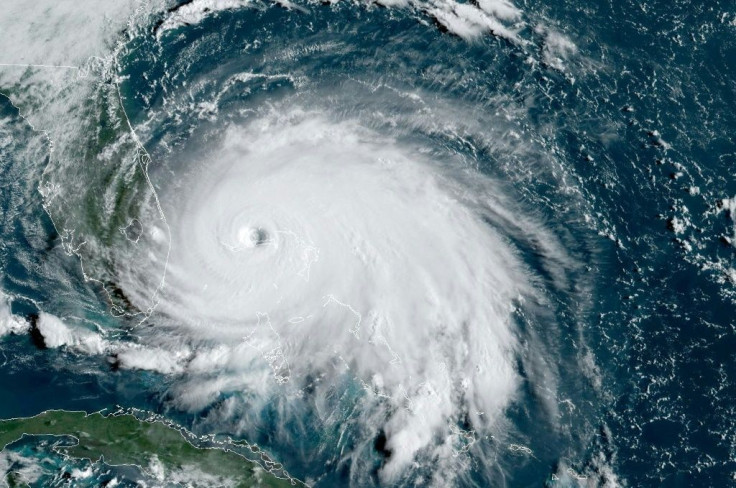More Storms Stirring As Ideal Conditions Producing 'Extremely Active' 2020 Hurricane Season
KEY POINTS
- Four tropical disturbances were being tracked Monday across the Atlantic by the National Hurricane Center
- The 2020 season has already produced 14 tropical depressions, 13 of which became tropical storms and 4 that became hurricanes
- The NOAA previously warned about an "extremely active" 2020 season that could see up to 25 named storms form in the Atlantic by November
The National Hurricane Center was tracking four tropical disturbances across the Atlantic Ocean on Monday, with two nearing the U.S. coastline forecast to strengthen in the coming week.
Following two hurricanes in the Gulf of Mexico over the last week, the weather continues to validate the National Oceanic and Atmospheric Administration’s warning about the 2020 storm season being “extremely active.”
The first disturbance picked up in the Atlantic formed off the northern coast of South America and is moving west at speeds between 15 and 20 mph. As of Monday, the NHC gave the disturbance a 70% chance of forming into a tropical depression. Its current projected path would have the front hitting the coasts of Nicaragua and Honduras by Friday.
Tropical disturbance 2 is being tracked off the East Coast near Georgia and South Carolina. The five-day forecast has the storm also strengthening while its current projected path keeps it scatting along the coastline.
An Air Force Reserve Hurricane Hunter aircraft is prepped to begin monitoring the front on Monday afternoon if deemed necessary.
The last two disturbances are located in the eastern end of the Atlantic around the coast of western Africa. Both are in early stages of development and are not considered a threat for the week ahead.
However, the number of storms only supports the NOAA’s warning on Aug. 6 about how active the Atlantic’s 2020 season would be.
The NOAA said in its Aug. 6 report the peak of hurricane season, which runs from August to November, typically produces around 12 named storms. However, the updated forecast for 2020 called for 19 to 25 named storms for that same period, with between 7 and 11 of those storms becoming hurricanes.
“This is one of the most active seasonal forecasts that NOAA has produced in its 22-year history of hurricane outlooks,” Secretary of Commerce Wilbur Ross said in the report. “NOAA will continue to provide the best possible science and service to communities across the Nation for the remainder of hurricane season to ensure public readiness and safety. We encourage all Americans to do their part by getting prepared, remaining vigilant, and being ready to take action when necessary.”
Warmer surface temperatures in the Atlantic are contributing to an active 2020 season, along with a potential lack of suppressive events such as wind shear or dry air events.
"We had events that suppressed further intensification of the tropical storms so far, but that doesn't mean those events will still be around in August and September," hurricane researcher Tim Hall said in a July report from NASA. "The warmer-than-average ocean temperatures will likely persist until the fall so the table is set for an active season if these other key factors also line up."
The Aug. 6 report stops short of citing climate change as a contributor to the growing storm activity. However, a separate report by the NOAA points out how climate change is helping to keep surface temperatures warm which, in turn, helps contribute to the number and intensity of storms.
"In the present, warming of ocean water is raising global sea level because water expands when it warms. Combined with water from melting glaciers on land, the rising sea threatens natural ecosystems and human structures near coastlines around the world. Warming ocean waters are also implicated in the thinning of ice shelves and sea ice, both of which have further consequences for Earth’s climate system," an Aug. 17 NOAA report said.
"Finally, warming ocean waters threaten marine ecosystems and human livelihoods. For example, warm waters jeopardize the health of corals, and in turn, the communities of marine life that depend upon them for shelter and food. Ultimately, people who depend upon marine fisheries for food and jobs may face negative impacts from the warming ocean."
The 2020 season has already produced 14 tropical depressions, 13 of which became tropical storms. Four of those tropical storms became hurricanes, the strongest of which was Hurricane Laura. Laura reached category 4 strength in the Gulf of Mexico before making landfall on Thursday in Louisiana.
Only eight names are left on the NHC’s list of 2020 Atlantic storm names and the agency would be forced to employ the Greek alphabet if the number of storms surpasses the list of 21 names.

© Copyright IBTimes 2024. All rights reserved.





















